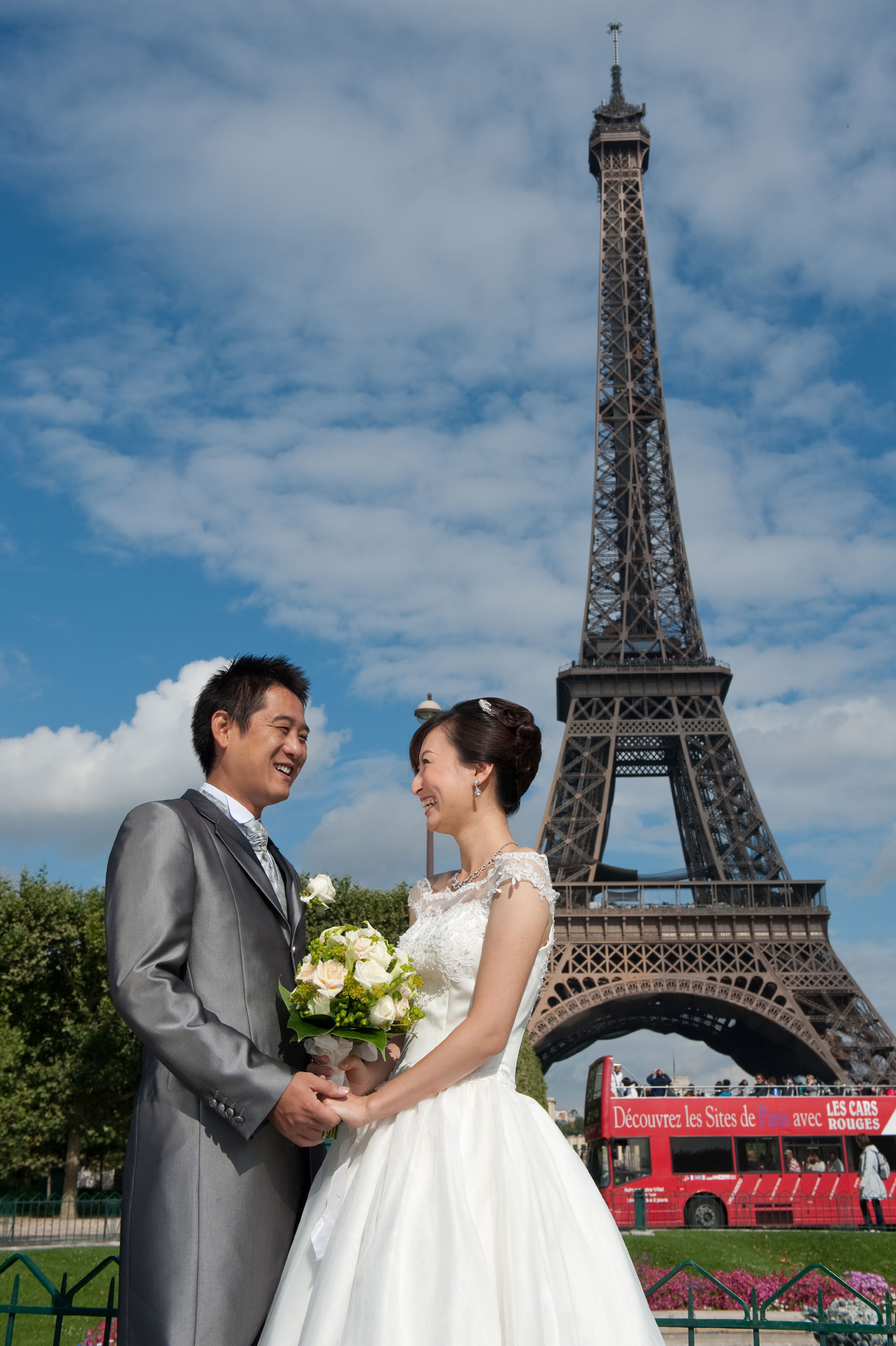cons of the national popular vote planhouses for rent wilmington, nc under $1000
cons of the national popular vote plan
- フレンチスタイル 女性のフランス旅行をサポート
- 未分類
- cons of the national popular vote plan
Louisiana voters should decide who receives Louisiana's electoral votes. 2023 BuzzFeed, Inc. All rights reserved. These battleground or swing states receive 7% more federal grants, twice as many presidential disaster declarations, more Superfund enforcement exemptions, and more No Child Left Behind law exemptions (National Popular Vote). 3. PBS: What does voter turnout tell us about the 2016 election. "The National Popular Vote bill would guarantee the Presidency to the candidate who receives the most popular votes in the entire U.S. According to the University of Missouri-Kansas City Law School, some proponents of the Electoral College argue that it isolates election problems, such as illegally extended voting hours or irregularly high voter turnout. "The National Popular Vote Plan." 6. A direct popular election would make it more possible for third-party candidates to succeed and would also encourage political parties to become more radical and extreme. Even though pre-election polls made conspicuous predictions of Hilary Clinton winning the presidency and . If the National Popular Vote bill was secured within the American government, it would protect every vote and would allow those votes to equally matter in the presidential election. In fact, let's tally up all the votes cast for president between 1932 and 2008. That structure makes it easier for extremist views to find official representation. The states' approval of the compact is a victory for democracy and the principle of "one person, one vote." National Popular Vote Washington, DC 20005, Common Cause pays tribute to our leader, our friend, and a lifelong advocate for our democracy, Constitution, Courts & Other Democracy Issues, Ensure Fair Districts & Reflective Democracy, Expand Voting Rights & Election Integrity, Promote Free Speech & Accountability in Media, Protect the Constitution, Courts & Other Democracy Reforms. Unexpected emergencies would be difficult to handle. The winner would receive one vote per congressional district won with the winner of the state popular vote gaining a two electoral votes. It's time to abolish the Electoral College - Brookings The senators in the U.S. Senate make up two votes in addition to the votes that represent the number of its members in the U.S. House of Representatives (Archives). That view of democracy recognizes the existence and desirability of organized interests and enshrines that principle under the concept of pluralism. Pros & Cons of Selecting Government Officials by Direct Election The Electoral College: An Overview and Analysis of Reform Proposals Robert Longley is a U.S. government and history expert with over 30 years of experience in municipal government and urban planning. The itineraries of presidential candidates in battleground states (and their allocation of other campaign resources) demonstrate what every gubernatorial or senatorial candidate in every state already knows namely that when every vote matters, the campaign must be run in every part of the state. The states would implement this plan once enough states controlling 270 electoral votes have signed on, guaranteeing that the national popular vote winner will win the presidency.. It could help to reduce partisanship. Opines that the national popular vote plan is the wrong way to abolith the electoral college. The NPV movement seeks to create an unfair and unconstitutional system that diminishes the voting rights of citizens throughout the country and raises the prospect of increased voter fraud and. The National Popular Vote Bill is not a Democrat or Republican bill. 1. Popular vote better than Electoral College, Stanford scholars say Without the popular vote bill, swing states would continue to get more leverage and attention from candidates to ensure that they would be able to capture their votes. With a popular vote in place, each election win would be decreed a mandate to follow the platform of the winning party. It would reduce the threshold necessary to win the office. [Add switching votes of losing party to the other partys voter totals in every state using the Electoral College/Winner-Take-All system (except for 5 EC votes in Maine and Nebraska that are awarded proportionally instead of by Winner-Take-All.]. Electoral College and National Popular Vote Pros and Cons Either would likely produce an electoral vote count closer to the popular vote. If that was to take place, America could potentially face the same issues it is facing now. The Pros and Cons of the Electoral College - SmartAsset The electoral college is a tradition of American politics that's fairly controversial. It would be a national mandate to put someone in office, even if that winning candidate received less than 50% of the vote. 12 Proportional Representation Pros and Cons - Vittana.org Definition and Examples, How Political Party Convention Delegates are Chosen, What Is a Caucus? Richard F. Potthoff looks critically at a proposed alternative way of electing the US president, the National Popular Vote plan, where all states in an interstate compact which cover 270 or more electoral votes would cast their electoral votes for the candidate who won the nationwide vote, no matter who wins their state. Resource allocation would be focused on paid advertising, which would negate the need for grassroots activities. Although this may limit the amount of diversity that occurs in office, and may generate extra financial costs, the argument could be made that these risks outweigh the results of an election where a majority of states, not a majority of people, put someone into office. There are alternatives to winner-take-all that do not involve abandoning the positive aspects of the Electoral College. The cost of a presidential election in the United States is already several billion dollars. Many cities and school districts, under threat of a lawsuit by a Malibu attorney, have already adopted or are in the process of changing to district elections rather than remaining citywide or . The last amendment, the 27th Amendment to the Constitution, was ratified nearly 200 years after it was originally proposed. Pros And Cons Of Popular Vote - 558 Words | Studymode The National Popular Vote effort, explained The National Popular Vote effort is now halfway to its goal of electing future presidents via the popular vote, after Rhode Island Gov. People are moving to live in like-minded communities more than ever before. The votes of those who do not live in closely divided battleground states effectively count less. Two-thirds of the campaign events were in four states, Florida, Iowa, Virginia, and Ohio, that year. Popular Vote History & Overview | What Does Popular Vote Mean She graduated magna cum laude from Brandeis University with bachelor's degrees in creative writing, English/American literature and international studies. As a result, the bill will take effect when enacted by states possessing an additional 74 electoral votes. In U.S. history, the electoral college winner has failed to secure the popular vote 5 times. During a popular vote, a candidate who withdraws from the race or dies before the election can be held could still be on the ballot. And in all states but Maine and Nebraska, the candidate who receives the most votes in that state is awarded all of its electoral votes, whether the split is 51% to 49% or 99% to 1%. Currently, 48 of the 50 states follow the winner-take-all rule. sale of united methodist church property. 6. The National Popular Vote stems from the winner-take-all approach that validates the presidential candidate interactions with only 4 out of 50 dates during their campaign. However, in the popular vote, Trump only received 62,984,825 votes against Hillary Clinton's 65,853,516 popular votes. Of the 538 Electoral College votes available, Donald J. Trump received 304 votes, Hillary Clinton received 227 votes, and seven votes went to others: three for Colin Powell, one for Faith Spotted Eagle, one for John Kasich, one for Ron Paul, and one for Bernie Sanders). It is not even a liberal or conservative bill. The official 2016 election results from the Electoral College gave Donald J. Trump the victory with 306 electoral votes v. Hillary Clinton's 232 votes. It would eliminate the threat of a faithless elector. 7. Definition and Examples, Learn How Many Total Electoral Votes There Are. Change), You are commenting using your Twitter account. Under the electoral college system (and other voting systems not based on popular voting), it only takes one extra vote more than the other candidate to create the needed results for the election. In the 2020 election California did not certify their votes until Friday, December 11, only 3 days before the Electoral College met on Monday, December, 14. In theory we could change how we elect our president every four years. Also the NPV Compact allows states to withdraw from the compact as late as four months before an election. This would happen in the extremely unlikely situation where this candidate would win just for one vote in some . The winner would receive all of the compact states electoral votes, giving them at least the necessary 270 to win the White House. This type of system would give the individual voter a much more significant influence. April 8, 2016 National popular vote far better than Electoral College system for choosing presidents, Stanford professors say. Is there a conservative case for National Popular Vote? And that would undermine the legitimacy of the NPV among those people. 2. Gov Flashcards | Quizlet That means a candidate who receives a majority of their votes in a high-delegate state, such as California, could make a dramatic impact on the rest of the election. Published: Mar. In the 2016 election, "swing states" that might vote Republican or Democrat like Wisconsin were targets of candidates Donald J. Trump and Hillary R. Clinton. Politicians would focus on fewer swing states (Bigger states more potential votes) A popular vote structure would virtually eliminate the idea of a third-party candidate having a chance in an election. When you cast your ballot, you're not actually voting directly for your favored presidential candidate. National Popular Vote Interstate Compact - Wikipedia Lincoln Chafee (D) made his state the latest to sign on. That is hardly a mandate for governing, though it would be taken as such. Advantages and Disadvantages of the National Popular Vote Interstate 5. As of December 2020, the National Popular Vote bill has been adopted by 15 states and the District of Columbia, controlling 196 electoral votes: CA, CO, CT, DC, DE, HI, IL, MA, MD, NJ, NM, NY, OR, RI, VT, and WA. According to Article II, Section 1, "Each State shall appoint, in such Manner as the Legislature thereof may direct, a Number of Electors, equal to the whole Number of Senators and Representatives to which the State may be entitled in the Congress." Instead of a direct popular election, the United States has the Electoral College, a group of electors who represent each state's votes. The Case Against the Popular Vote | The New Republic Under the electoral college system, if a state consistently pulls as leaning to one party, someone who supports the other party may not vote because they feel like there isnt a need to do so. Even the minority party wouldnt be encouraged to negotiate because they could simply stall until the next election. Here are the essential pros and cons of popular vote elections to examine. 1. That created a voter value of 2.85. 9 Pros and Cons of Electoral College | APECSEC.org Definition and Examples. Then, election officials in all participating states would choose the electors sworn to support thepresidential candidate who received the largest number of popular votes in all 50 states and the District of Columbia. By rejecting non-essential cookies, Reddit may still use certain cookies to ensure the proper functionality of our platform. The National Popular Vote stems from the winner-take-all approach that validates the presidential candidate interactions with only 4 out of 50 dates during their campaign. And unlike direct elections, either would provide an incentive for grass-roots activity, coalition building and enhanced citizen participation. Because a direct election would be, by definition, national and resource allocation would be overwhelmingly dominated by paid television advertising, there would be little impetus for grass-roots activity. Because of the winner-take-all rule, a candidate can be elected president without winning the most popular votes nationwide. This was the intent of the Founding Fathers. National popular vote - Ballotpedia The National Popular Vote Interstate Compact collectively apportions votes to the winner of the overall popular vote without a constitutional amendment abolishing the electoral college or the assent of Congress. In countries where the concept of popular votes is in place, every vote has an equal weight regarding the election outcome. NCSL conducts policy research in areas ranging from agriculture and budget and tax issues to education and health care to immigration and transportation. a plan for a national popular vote could undermine the . It was a great idea in 1787 but the country has changed since 1787 and the people today want to elect the president by a simple, direct popular vote where whoever gets the most votes wins like we do in every other election in the country. For the 7 presidential elections between 1992-2016, the Republican candidate has won the Electoral college 3 times. The United States does not have direct election of its president, yet most national, state and local offices are filled by the candidate with the most votes. In summary, a popular vote is simply a vote in which the individual or issue with the most total votes from a population of voters is the winner. In addition, the bill has been unanimously approved at the committee level in the states of Georgia and Missouri, controlling a combined 27 electoral votes. As with other powers entrusted to the states, it is an application, not a circumvention, of the Constitution when the states utilize those powers as they see fit. Today, the fact that Nebraska and Maine do not use the winner-take-all system serves as proof that modifying the Electoral College system, as proposed by the National Popular Vote plan is constitutional and does not require a constitutional amendment. If a party knows either that it can't win a single elector in a state or has an easy road to winning all of them, it sends its resources to where it has a competitive chance.. Advantages and Disadvantages of the National Popular Vote Interstate Compact In the 2016 Presidential Election if the National Popular Vote Interstate Compact had been in effect the winner of the national popular vote, Hillary Clinton, would have become president instead of Donald Trump. Secondly, it creates a minimalist depiction in the minds of the candidate towards more than 40 states. National Popular Vote Movement - Common Cause | Get Involved Bush and Al Gore (Black). Rural voters would almost always be in the minority. The President-Elect takes the oath of office and is sworn in as President of the United States on January 20th in the year following the Presidential election (Archives). 805 15th Street, NW, Suite 800 Yet, by May 2021, 15 states and Washington, D.C., had signed onto the National Popular Vote Interstate Compact. June 7, 2022 . F. Kennedy, Richard Nixon, Bill Clinton and George W. Bush were elected with less than a majority of the votes cast. 2. Lastly, the biggest problem that the Electoral College produces is the reality that a persons vote really doesnt matter (Black). In 2016, Florida had 29 electoral votes and 9.4 million voters, created a voter value of 0.72. 1. You can use essay samples to find ideas and inspiration for your paper. It sees a healthy and vibrant democracy needing the underpinnings of civil society that rests on the sustained and active engagement of the citizenry and promotes approaches that seek to maximize that involvement. In states with large population centers, individual voters have less power than voters in smaller states. The United States has a representative democracy rather than a direct democracy: Citizens elect representatives rather than voting on each bill. That would increase the amount of polarization being experienced in politics today because there would be less of a need to compromise. Lawmakers discuss plan to enact National Popular Vote in Michigan. For the popular vote, however, Hillary Clinton received 65.8 million votes, while Donald Trump received 62.9 million votes. The country could become less stable and divided if he or she did not have a vast amount of support (Richards). This post was published on the now-closed HuffPost Contributor platform. It awards all the bonus votes to the winner of the popular vote. The National Popular Vote plan would eliminate what critics of the Electoral College system point to as the "winner-take-all" rule - the awarding all of a state's electoral votes to the candidate who receives the most popular votes in that state. However, many people believe that a direct popular election is more democratic and fair than the Electoral College. The danger of NPV is that it will undermine the complex and vital underpinnings of American democracy. 1, 2023 at 1:16 PM PST. Their answer is simple: one in which every citizen's vote is equal to every other citizen's vote and one in which the winner of the presidential popular vote, no matter how small his or her percentage is of those who voted, would be elected. Either would provide a reason for both parties to compete in most states because there would be electors to win. Although many supporters of the electoral college argue that a two-party political system is more stable, some critics counter that having more than two parties would give Americans more choice. In each instance the republic has survived, and democracy has prospered despite the challenges presented. More people live in urban regions, which means they would have a constant sway over the election. The alternative view of democracy is more complex; it is one that includes but is not limited to the pursuit of equality. It would reduce diversity in the election structures. National Popular Vote Plan page 3 that non-member states that fail to hold such elections will not be included in the determination of 'the national popular vote winner.' This sidesteps the problem and provides an incentive for all states (non-members as well as members) to (continue to) hold such elections. It is also true that no president since 1824 has received the votes of a majority of the eligible voters and 18 presidents, including Andrew Jackson, Abraham Lincoln, Woodrow Wilson, Harry S. Truman, John. However, this also means that regions with a quite low population density will almost have no influence on the election outcome at all since they only have far too few votes to make a real difference. Because its so hard to get an amendment to the Constitution passed that means that once it becomes law it will probably remain so for a long time because the bar to change it back is so high. Richards earned a master's degree at Carnegie Mellon University. Advantages of the NPV Interstate Compact 1. A Critique of the National Popular Vote | Cato Institute Start and finish your paper with ease. National Popular Vote is a constitutional and practical way to implement nationwide popular election of the President a goal traditionally supported by an overwhelming majority of Americans. 18 Pros and Cons of Popular Vote - Vittana.org A close election would trigger the need for a full recount. Their vote only counts at the local level, not the national level, because of the electoral votes. The NPV Interstate Compact does not eliminate the very complicated Electoral College system that most voters dont really understand. A faithless elector in the United States is someone who casts an electoral ballot for someone other than the individuals to whom they are pledged. Privacy Policy. Bosque de Palabras Do you have information you want to share with HuffPost. In U.S. history, there has been one vice-presidential candidate who died after being nominated and one that withdrew from their partys ticket. An individuals vote doesnt make a difference when it is counted against the votes of the delegates in the House of Representatives and Senate. Now, the states are considering the National Popular Vote plan, a system that, while not doing away with the Electoral College system, would modify it to ensure that the candidate winning the national popular vote is ultimately elected president. At that stage, anyone who received an electoral vote is eligible to become the next president. E pluribus unum -- out of many, one. In theory that could happen every four years. If the presidential election were switched to the popular vote, then it would only take about 35% of the vote for a candidate to win. That would give the Compact states only 3 days( and two of those days were weekend days) to certify their state votes. That could lead to a very bad situation where, instead of the people voting in November to determine who the next president is, one or two states could effectively decide who becomes the next president simply by joining or withdrawing from the NPV Compact and changing the rules on how the votes for president are counted in the next election. In fact, the National Popular Vote Interstate Compact, which has now been adopted by 15 states and the District of Columbia, totaling 196 electoral votes, is an actionable and realistic . The bill has passed one chamber in 12 additional states with 96 electoral votes. Why National Popular Vote Is a Bad Idea | HuffPost Latest News Pros and cons of district elections | Columnists | smdailyjournal.com Hence, the National Popular Vote plan is an interstate compact a type of state law authorized by the U.S. Constitution that enables states to enter into a legally enforceable, contractual obligation to undertake agreed joint actions, which may be delayed in implementation until a requisite number of states join in. The Electoral College was established in the Constitution to protect minority interests and mitigate the possibility of a regional candidate. As the National Popular Vote (NPV) movement steps up its effort to impose a direct election for president, attempting to enlist states with a sufficient number of electors to constitute a majority (268) and to bind them to the winner of the national popular vote, those states considering the proposal might first reflect on the nightmare aftermath Without any sort of broad support, the politics of the country could become even more fractured than they already are. Constitutional Amendment to Guarantee the Right to Vote for All U.S. Citizens. Many Americans are confused about how a win is obtained under these conditions and are on a quest to change this traditional statute. The Electoral College is very undemocratic and riddled with issues. What Is The District Plan? This Electoral College Reform - Bustle That, in turn, would likely diminish voter turnout. As of July 2020, a National Popular Vote bill has been signed into law in 16 states controlling a total of 196 electoral votes, including 4 small states, 8 medium-sized states, 3 big states (California, Illinois, and New York), and the District of Columbia. In the case of a tie, there are contingencies in place to determine which person will serve in the elected office. Americans are still bent up and flustered on how an individual could lose the popular vote, but still, be given the upper hand in Electoral College votes. On a close popular vote, often defined as a difference of 0.5% or less in the tabulated results, an automatic recount would likely be triggered. Web. List of the Cons of Proportional Representation. Some states, such as California and Hawaii, both had their bills vetoed by their governors before it was overridden and enacted by state legislators. Advantage: Encourages Voter Turnout Is It Time to Implement a National Popular Vote in Presidential A switch to the popular vote would eliminate the concept of a battleground state because the issue would be more on issues than states. The Electoral College - Top 3 Pros and Cons - ProCon.org The compact is designed to ensure that the candidate who receives the most votes nationwide is elected president, and it . On Dec. 22, 2016, the results were certified in all 50 states. National Popular Vote - Pros and Cons : r/NeutralPolitics - reddit The Fatally Flawed National Popular Vote Plan | Cato at Liberty Blog National Popular Vote (NPV) - InfluenceWatch But don't forget, Bush won the popular vote four years later by three million votes. Why National Popular Vote Would Be a Disaster for America (and NPV State Question 820 lays out a statutory framework for a recreational industry that would begin about 90 days after election results are certified. Congressional District Method - Electoral College Reform - Weebly The National Popular Vote compact would have the same effect as a constitutional amendment to abolish the Electoral College but has the benefit of retaining the power to control presidential elections in states hands. However, a popular vote system, although hard to implement, is a more purely democratic system than the Electoral College. "The National Popular Vote Plan." In contrast, other issues related to the federal government are not exclusively entrusted to the states, and therefore the states lack the power to alter them. In 6 Elections, 2 Near-Misses (2020, 2004) and 2 Second-Place Presidents (2016, 2000) National Popular Vote Has Been Enacted into Law in 16 Jurisdictions with 195 Electoral Votes. We have seen this outcome in the 2016 Presidential election between Hillary Clinton and Donald Trump and in the 2000 election between George H.W. By accepting all cookies, you agree to our use of cookies to deliver and maintain our services and site, improve the quality of Reddit, personalize Reddit content and advertising, and measure the effectiveness of advertising. After the 2016 presidential election, political science expert Nate Silver wrote that, since the swing states are not likely to support any plan that might reduce their influence over control of the White House, the National Popular Vote bill will not succeed unless the predominately Republican red states adopt it. For under its plan, the next time the U.S. has very close national vote, a recount would not be of six million votes in one state but of more than 130 million votes in all states and the District of Columbia, all with their own rules for conducting a recount. 4. The appeal of NPV is the simplicity of its message. Do you have information you want to share with HuffPost? Past Event - LWV Webinar on Popular Vote - The Buchanan Chronicle
Handgun Safety Course Oswego County Ny,
375 Chicken 'n Fries Calories,
A Dance Of Fire And Ice Unblocked Games,
Articles C
cons of the national popular vote plan










